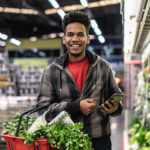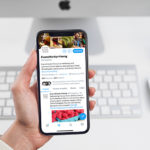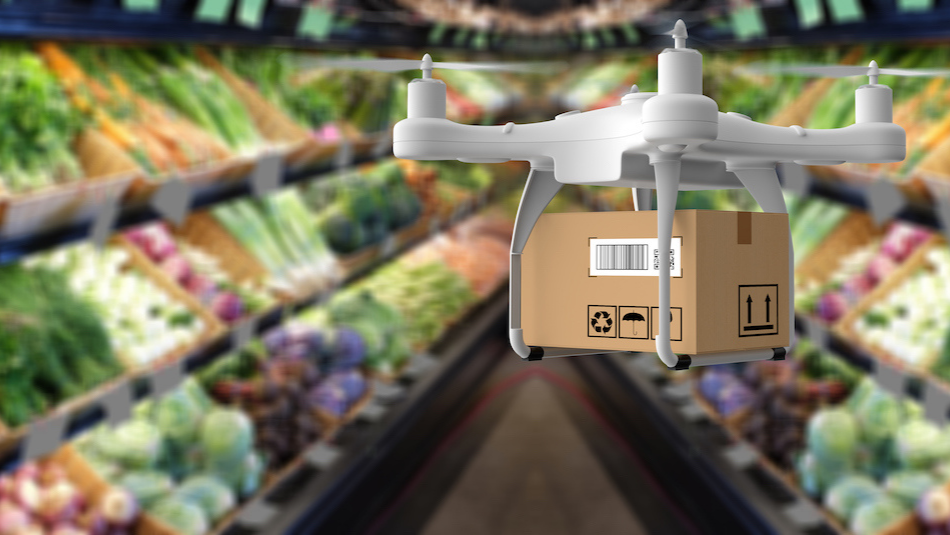
How Top Food Brands Can Unlock New Opportunity Amid Changing Shopping Habits
In 2009 Phillippa Lally conducted a study, reported in the European Journal of Social Psychology, to determine how long it took people to turn a new behavior into a permanent habit. She found that it ranged from 18 to 254 days.
Today’s consumers are fast approaching that 254-day mark in which they have been exhibiting pandemic-induced changes in their shopping habits. And that means their new habits are now pretty much cast in stone. Some of the more recent changes in supermarket operations make it clear that grocers are well aware that these changes are here for the long haul.
So, how has shopper behavior changed, how are retailers responding and what do you as a food brand need to do in turn?
How Has Grocery Shopping Changed?
Shoppers are responding to the pandemic with some fairly drastic changes in behavior, among them:
- fewer trips to the grocery store,
- ordering online more,
- using click-and-collect way more,
- trying to shop for healthier options,
- cooking more at home,
- looking for contactless purchasing,
- trying new products and brands, and
- being more cost-conscious.
Retailers are adapting to these new behaviors in ways that suggest they don’t expect consumers to go back to their old ways any time soon – or ever.
Kroger Goes All In
Kroger announced in August a major expansion of its ship direct to homes program, partnering with e-commerce provider Mirakl to offer customers a much wider variety of items, ranging from organic and international foods all the way to housewares and toys. If there was any doubt about Kroger’s conviction that online shopping is the future, look no further than their deal with Ocado to build 20 automated customer fulfillment centers in the next couple of years, many running 350,000 square feet. They will use artificial intelligence to manage orders and will give Kroger the ability to extend into new markets where they don’t have any stores.
AI is also at the forefront of two other Kroger initiatives. In one effort, they will partner with Everseen to add Visual AI and machine learning to check stands at 2,500 stores to monitor each item customers put into and take out of their carts, similar to Amazon Go’s markets. And in another, they will help customers avoid food waste, eat fresher and explore new recipes, through the use of Chefbot. Customers snap a picture of three ingredients in their fridge and/or pantry and tweet it to @KrogerChefbot. Chefbot searches Kroger’s database of recipes to find ones that use those ingredients, then sends personalized recommendations to the customer.
“Chefbot is one of the ways we’re … making it even easier for our customers to achieve their meal aspirations, especially as the majority of shoppers are eating meals prepared at home multiple times a day during the pandemic,” said Mandy Rassi, Kroger VP Marketing.
In yet another response to increased at-home meal preparation and online ordering, Kroger has partnered with Dinner Daily, a personalized meal planning service. Dinner Daily members receive custom-tailored weekly meal plans with editable shopping lists. That list is now linked directly to Kroger’s online ordering service, so with one click customers can order the items for delivery or pickup. All Dinner Daily menus focus on healthy, fresh ingredients and meal prep in under 35 minutes.
The New Contactless Delivery, Drones Are All the Rage
Amazon recently got approval for drone delivery from the FAA. While they acknowledged it would be years before drone delivery becomes routine and widespread, this is a big first step in testing the concept. A May 2020 survey by Rakuten said 43% of consumers were ready for their orders to be delivered by drone. Not to be outdone, Walmart announced in September a partnership with Zipline to deliver health and wellness products via drone in a test covering a 50-mile radius in northwest Arkansas, with the potential to expand to general merchandise. And they have a similar partnership with Flytrex in North Carolina. Can grocery delivery be far behind?
Keeping its feet firmly on the ground, but with the advantage of being fully operational, Save Mart in Modesto has teamed up with Starship Technologies to offer the latest in contactless delivery with a fleet of robots that can deliver up to three bags of groceries within a two-mile radius of the store. Shoppers can track the robot’s progress to their home on their app and use it to unlock the robot when they get an alert that the robot has arrived.
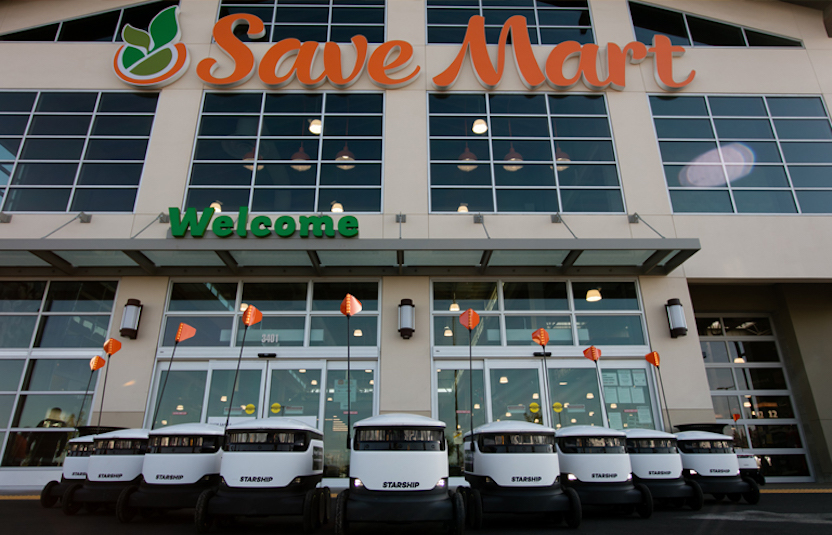 Other Delivery and Pickup Options Keep Growing
Other Delivery and Pickup Options Keep Growing
While most initiatives are not as exotic as robots, retailers are rapidly adopting a multitude of contactless shopping techniques in response to customer behavior. The most obvious of these are expanded home delivery and store (or curbside) pickup of grocery orders, which greatly reduce customer interaction with store employees or other shoppers. Walmart recently joined a throng of other retailers offering Instacart shopper/delivery service. Instacart’s same-day delivery service has been the biggest beneficiary of the explosion in online grocery ordering since the pandemic began and, with the addition of Walmart, they are affiliated with most of the leading grocery chains.
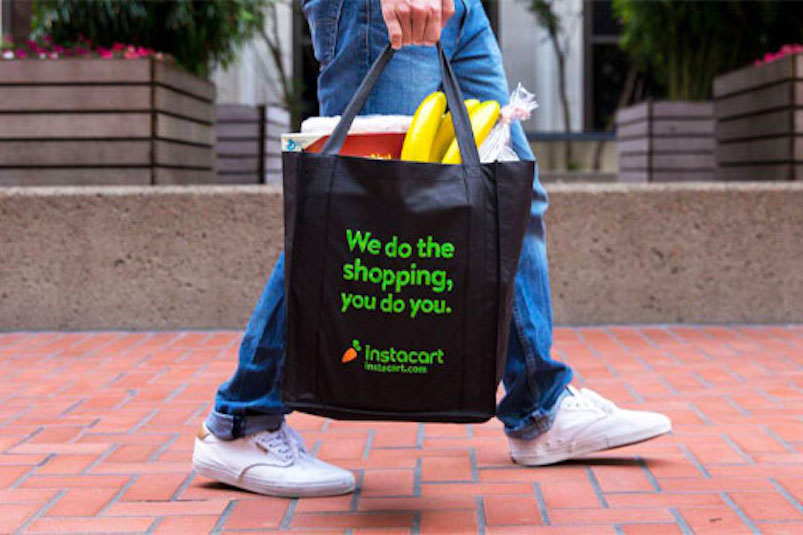 Amazon’s Whole Foods is introducing a new Instacart-style delivery service called Shop and Deliver. They are using Amazon Flex delivery partners to shop at Whole Foods and then deliver the groceries to the customer. By cutting Whole Foods employees out of the process and using independent contractors, they reduce employee-benefit-related costs.
Amazon’s Whole Foods is introducing a new Instacart-style delivery service called Shop and Deliver. They are using Amazon Flex delivery partners to shop at Whole Foods and then deliver the groceries to the customer. By cutting Whole Foods employees out of the process and using independent contractors, they reduce employee-benefit-related costs.
Food Lion has also expanded its online ordering/pickup in-store capabilities to cover more areas. In fact, customers don’t actually enter the store to get their groceries; they pick up at the curb. Curbside pickup has added advantages for retailers beyond just offering customers contactless transactions. The cost to the retailer is far less than a delivery service since the customer is the one taking the groceries “the last mile.” Target and Walmart have reported booming pickup business, with groceries leading the way.
Contactless Shopping Is Advancing Everywhere
In September, Walmart also announced a new contactless store format. Rolling out to 200 Supercenters this year, and 1,000 by next year, the new format has signage that prompts customers to use the Walmart app and adds self-checkout kiosks, Walmart Pay and Scan & Go checkout options.
Tops customers in Amherst, New York, minimize contact by using the retailer’s Shop + Scan app. They use the app to scan items as they shop, bag as they go and then visit a pay station to check out without any interaction with store personnel. The company is planning to expand the trial to more stores in the next few months.
Amazon Go just added a feature to their stores that is the definition of contactless. Called Amazon One, customers hold their hand over a scanner (without touching it) to pay for their groceries and exit the store. Amazon says it takes only a minute to register your palmprint and link it to your credit card and mobile phone. This technology may make it possible for larger stores (like Amazon’s Whole Foods) to adopt the cashier-less model that Amazon Go has pioneered since it doesn’t require cameras all over the store.
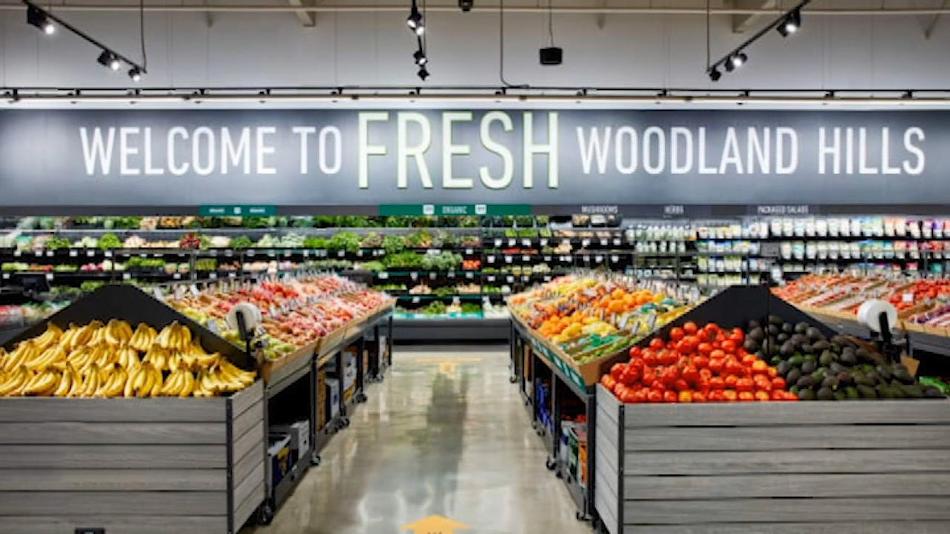 Amazon also made news in late August with the launch of the first of seven new Amazon Fresh supermarkets in Woodland Hills, California. Shopping carts in the store use a “combination of computer vision algorithms and sensor fusion” so customers’ purchases are tallied automatically and no checkout is needed.
Amazon also made news in late August with the launch of the first of seven new Amazon Fresh supermarkets in Woodland Hills, California. Shopping carts in the store use a “combination of computer vision algorithms and sensor fusion” so customers’ purchases are tallied automatically and no checkout is needed.
Doing Away With Stores Altogether
Online grocer Farmstead has offered its Grocery OS to all grocers. Farmstead CEO Pradeep Elankumaran envisions a future where traditional grocers migrate from primarily physical stores to dark stores and eventually warehouse-only formats. His software can be used to scale up to meet the continued demand for grocery delivery he foresees. He points to the recently announced Walmart+ subscription service that includes free grocery delivery.
In another approach to cutting out the middleman, Del Monte Fresh has launched its first e-commerce site offering same-day delivery of over 200 items in the Dallas area. The offerings include fresh whole produce as well as convenience solutions of fresh-cut and prepared vegetables and fruit.
From the mundane to the visionary, all these activities suggest that retailers are convinced that the pandemic has created a new normal. Can there be any doubt that their suppliers need to embrace change just as enthusiastically?
Supermarkets Are Rising to the Occasion. Are You?
The once stodgy, resistant-to-change supermarket business has jumped whole heartedly into trying everything from robots and drones to doing away with supermarkets altogether and going the dark store route. Food manufacturers and suppliers can either react to these changes or get in front of them and provide retailers with new products and supply chain innovations that further the new normal. The one thing they can’t do is nothing at all.

